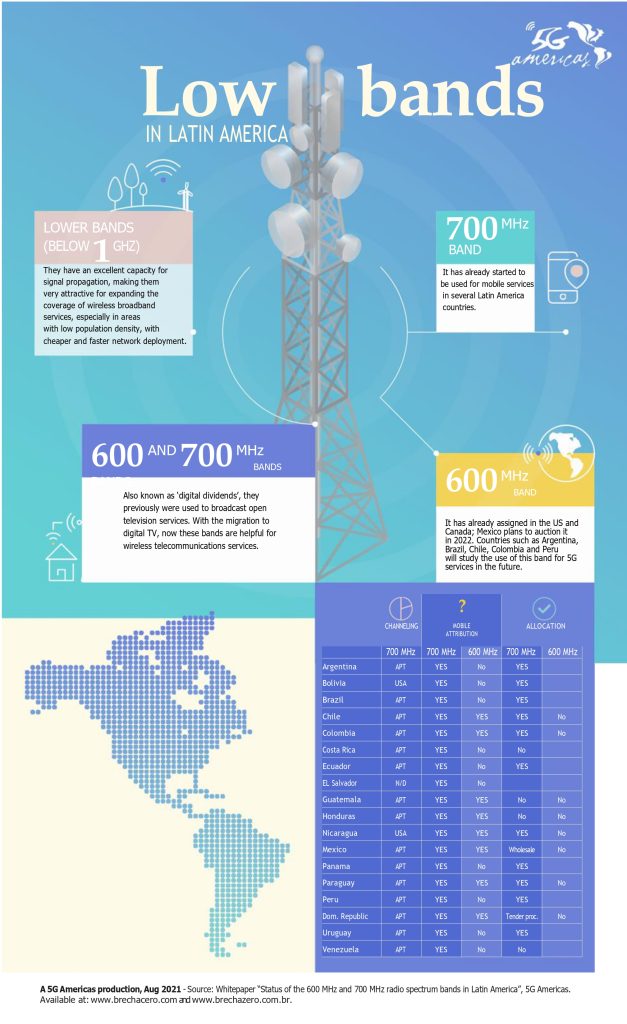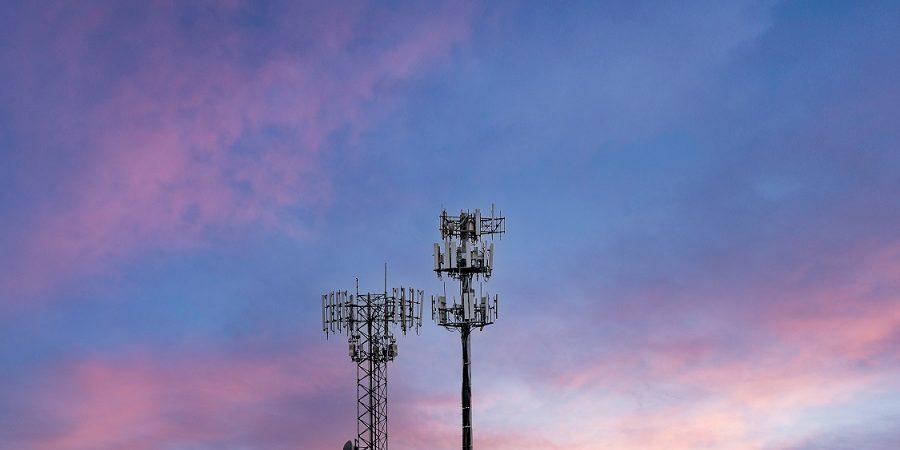5G Americas presents this infographic to better understand the importance of the so-called ‘low bands’ or ‘digital dividend’, which correspond to the 600 and 700 MHz frequencies and will serve to improve 5G services in Latin America.
Recently, 5G Americas introduced the report Status of the 600 MHz and 700 MHz Radio Spectrum Bands in Latin America, which reveals essential elements regarding the use of the so-called low bands of the electromagnetic spectrum for use in 5G and later mobile networks.
In Latin America, all countries are going through contrasting times adopting their fifth-generation mobile networks. Some are very advanced, and others have barely finished organizing key elements such as the legislation and regulation that must support technological and telecommunications operations.
In this regard, 5G Americas’ study explains that: “Beyond the ITU (International Telecommunications Union) recommendations in terms of the amount of spectrum, for mobile operators to use the radioelectric resource, it must be granted and be clean, that is, without interference of other services. These last two steps fall on the administrations of the countries and are, ultimately, the ones that take the longest time.”
How to clean and take advantage of the spectrum?
The frequencies of 600 MHz and 700 MHz, known as the ‘digital dividend’, were historically used by analog television services. Thanks to the compression used in digital transmissions, there is a good space in the spectrum to take advantage of soon.

The report explains that: “The first digital dividend refers to the 700 MHz band, which the mobile services are using in some Latin American countries. There is currently a second digital dividend for the 600 MHz band, with a similar conceptualization of signal migration.”
Similarly, “US assigned the 600 MHz band in 2016, while Canada auctioned it in 2019 and Mexico announced plans to auction it between 2021 and 2022. Some countries such as Argentina, Brazil, Chile, Colombia and Peru are studying the band’s use for 5G services in the future,” said 5G Americas in the report.
The sooner governments approve regulation and methodologies to use the low bands of 600 MHz and 700 MHz, the sooner citizens will take advantage of services based on 5G. New services include critical elements for competitiveness and the development of new business opportunities into the so-called Fourth Industrial Revolution.
2022: A decisive year
Among the main conclusions of the 5G Americas study, condensed in this infographic, are:
- One of the fundamental characteristics of the 700 MHz band is its great capacity for signal propagation, which makes it attractive for expanding the coverage of wireless broadband services in areas with low population density, with a network deployment cheaper and faster.
- The 600 MHz band (614-698 MHz) can provide more capacity for mobile services in low bands and give more coverage in rural areas and superior penetration in interior spaces.
- In Latin America, some countries are already considering the potential of the 600 MHz band. Still, not all administrations have allocated the band for the mobile service or established a deadline for releasing the 600 MHz band.
- It is necessary that a more considerable number of countries in the region consider the use of the 600 MHz spectrum band to offer mobile services. The band is an essential ally in the development of 5G.


